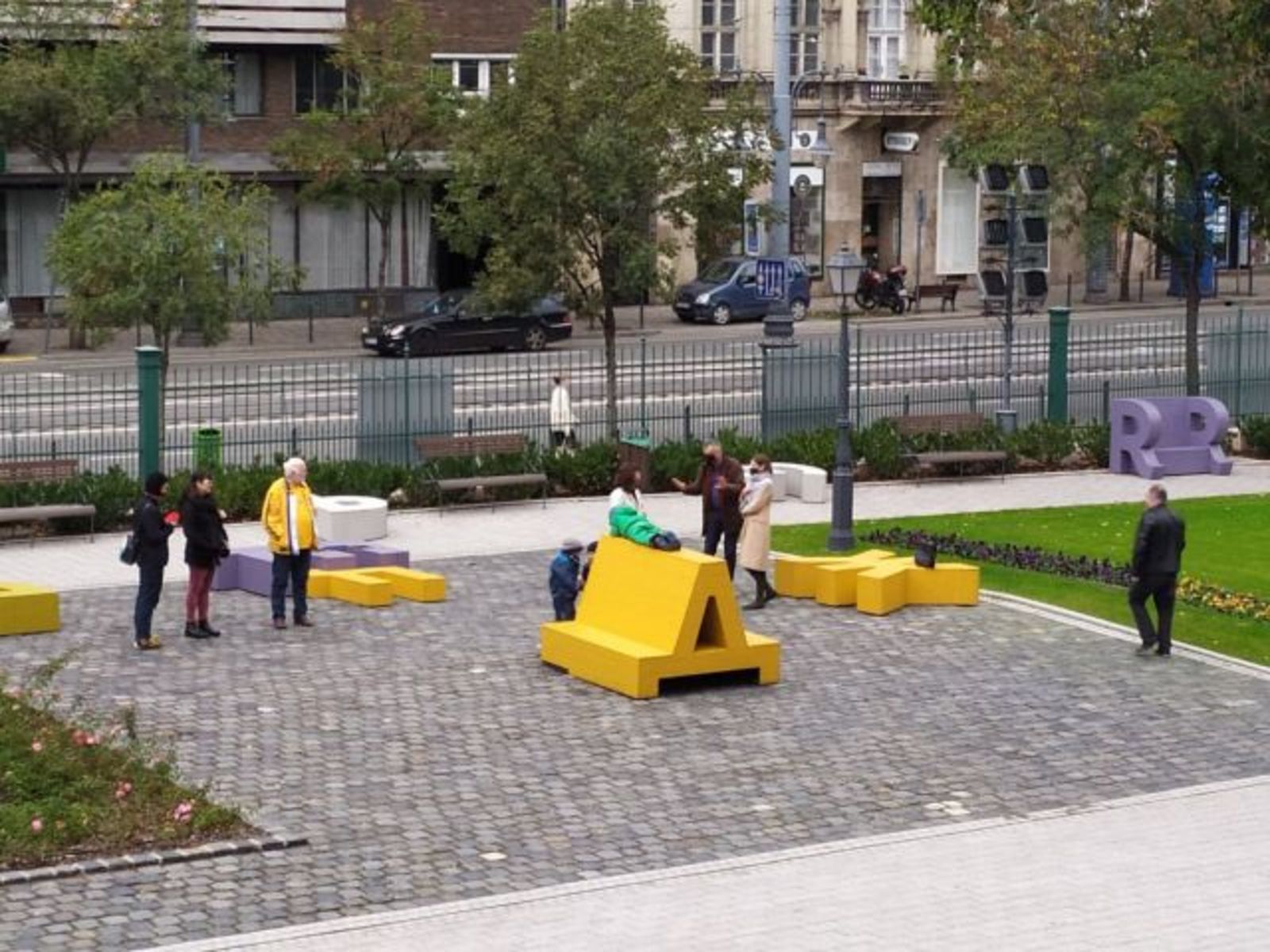The Bulgarian letters in Budapest 2020
On October 19 - the Day of Bulgarian-Hungarian Friendship, the opening of the art installation "Bulgarian Letters in Budapest 2020" will take place in the park of the Hungarian National Museum. The initiative is being implemented as part of the celebration of the 100th anniversary of the establishment of diplomatic relations between the two countries.
Bulgarian Letters combines poetry and typography in an urban environment to create new places for reading and outdoor meetings. In the form of original benches in the beautiful park of one of the most emblematic cultural institutions in Budapest, Cyrillic letters that have no graphic equivalent in the Latin and Greek alphabets will be exhibited for about a month. These are the letters Б, Д, Ж, З, Ч, Ц, Щ, Ъ, Я. Each letter-bench is associated with selected works - translated into Hungarian, by some of the most important contemporary Bulgarian poets: Georgi Gospodinov, Ekaterina Yosifova, Ivan Tsanev, Marin Bodakov, Mirela Ivanova, Petar Chukhov, Plamen Doinov, Silvia Choleva.
The project "Bulgarian Letters in Budapest 2020" is implemented by the Embassy of the Republic of Bulgaria in Hungary, the Bulgarian Cultural Institute in Budapest and the State Cultural Institute under the Minister of Foreign Affairs of the Republic of Bulgaria, in partnership with the Hungarian National Museum.
"Bulgarian Letters" is a traveling exhibition of the Read Sofia Foundation, Bulgaria, with a team: Todora Radeva (curator and producer), Kiril Zlatkov (artist), Ivan Ivanov (architect). The typography of the letters-benches uses the font "Comet" with author: Kiril Zlatkov.
In 2018 the art installation appeared for the first time in Sofia, in 2019 it visited Paris and Rabat, and in the summer of this year - in Berlin. The Cyrillic alphabet is the third official alphabet in the European Union after the Latin and Greek alphabets. It is used by over 300 million people in more than 10 countries. It appeared in the ninth century, a few years after the Glagolitic alphabet, created by the holy brothers Cyril and Methodius. It is believed to be the work of St. Clement of Ohrid - one of their students, welcomed and rescued in Bulgaria in the late ninth century, after their expulsion from Great Moravia. From Bulgaria the Cyrillic alphabet was spread among the other Slavic peoples and underwent a number of changes before it reached us in its present form.
Photos - Bulgarian Cultural Institute - Budapest




